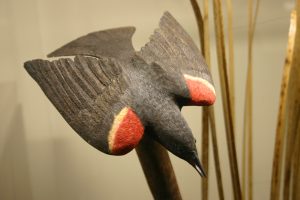
March often feels like everything is hurtling towards change. Welcome to spring…even if if it often doesn’t feel like spring at all.

where natural history meets art

March often feels like everything is hurtling towards change. Welcome to spring…even if if it often doesn’t feel like spring at all.
Join our monthly monitoring walk to record birds at the Museum’s trails, forest, and meadow. Learn something new, share what you know, or both!
All birders —current, experienced, newbie and would-be— welcome! Most fun for adults, older children.
Please bring your own binoculars and dress for the weather. We recommend bringing tick repellent (in most seasons) and a water bottle.
Max: 12 people
Free, suggested donation $5 – $15
Outdoors
Register at https://sevendaystickets.com/events/march-bird-monitoring-walk-3-30-2024
If the walk fills, call us to be added to the waitlist.
(Walks start at 8am September – March; at 7:30 am April – August)
Photo: Bohemian Waxwing in Museum’s crab apple tree, by Erin Talmage. Copyright 2016 and used by permission.
The museum was fortunate to have been missed by the flooding this year. The brook below the museum rose, and there’s signs of erosion on trails, but we escaped the damage that our fellow Vermonters are working through. We hope you also have been free from floods, and if not, that you have the help and support you need.
We can offer a refuge if you need to come and take a break: visit, sit, watch birds, walk trails… We thank the Vermont Community Foundation for their support of non-profits, flood survivors, and more.
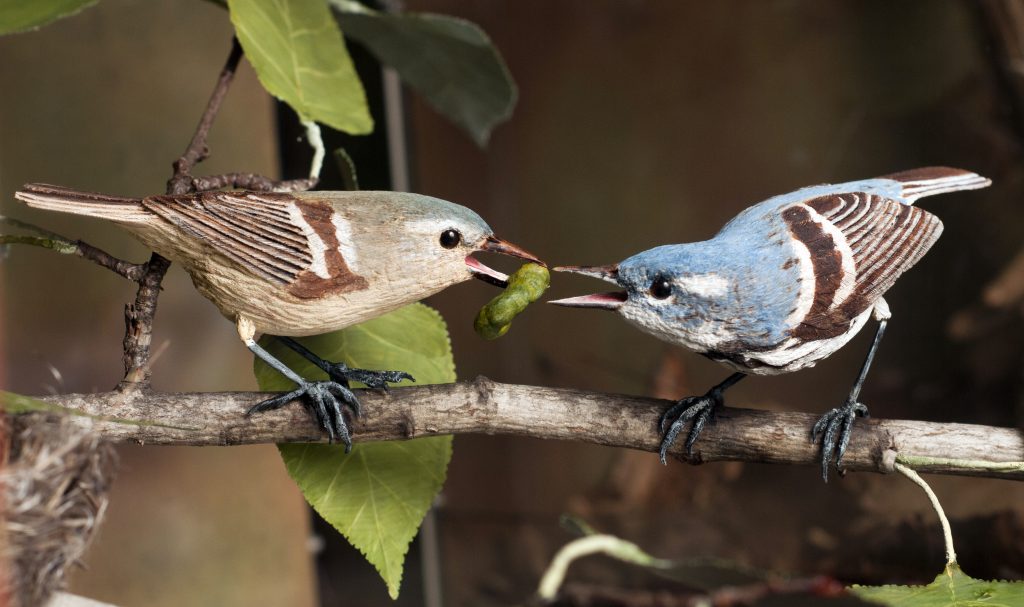
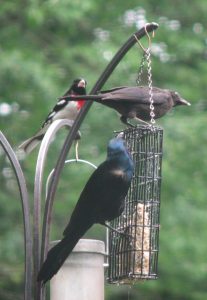
Sadly, yes, we are missing the May list. Somehow we managed to neither transcribe nor photograph the list before wiping the board for June. It was amazing, but you don’t have to trust my word for it. Check out the eBird checklists for the May walks.
But time flows on and the birds do their things, so here’s the …
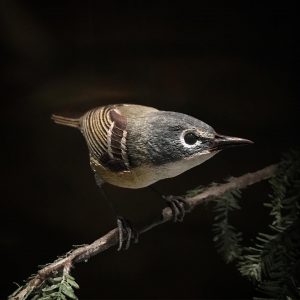
Funny thing about our April bird list: two common species were not recorded (and one somewhat less frequently seen at from the viewing window, but definitely around). Does that mean they weren’t seen (and if so, where were they)? Or did they really busy themselves elsewhere in the woods?
Do you know which they were? the two I’m thinking of were recorded during our April Bird Monitoring Walk…
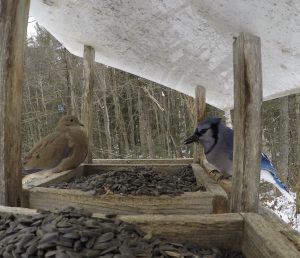
March is all about the this-way-and-that-way dance of winter, spring, and mud seasons. Watch for migrants returning and spring behaviors in, well, everyone. Two things we especially like:
The “Oh sweetie” song of the Black-capped Chickadee.
And those Mourning Dove males who keep getting distracted from eating—instead, they puff up and pace after the females, begging for their attention.
 A nice month! We were busy with camp groups, some new Nestlings programs, our wonderful annual butterfly walk, a carving class, and the final touches on our July Chip Notes newsletter.
A nice month! We were busy with camp groups, some new Nestlings programs, our wonderful annual butterfly walk, a carving class, and the final touches on our July Chip Notes newsletter.
And with all that, we still time to do a little sedentary birding! Though we are a bit sparse on birds at the feeders right now (see below)…

It’s been a pleasant early summer month at the Birds of Vermont Museum. We’re continuing our Early Birder Morning Walks on Sundays, and had a new walk offered: “Tree IDs for Birders”. We even had a booksigning and a carving class!
Even though we’ve cut back on our feeding, we have still been able to enjoy spotting birds through our windows (and doors) at the Museum.
 Still limiting feeding, although this month we saw so many birds that one might hardly have thought we were doing this! (Also, see below for why.)
Still limiting feeding, although this month we saw so many birds that one might hardly have thought we were doing this! (Also, see below for why.)
We also noticed that at certain times of the day, the light hit the front door just right (or perhaps, just wrongly) to apparently encourage bird collisions. We have fixed this! (More on this below, too.)
Also this month (and next): Early Birder Morning Walks! Check out the results when the walk leaders post them to eBird.

Despite changing from regular feeding to a restricted type and amount (see below for why), we still enjoying observing birds through our window. Something about just sitting, watching, maybe taking notes or doing Feederwatch… this helped us get through a wicked bad mud season and a few April snowfalls.
And as we post this, we’re well into another migration season! Check out BirdCast for nighttime forecasts of what’s moving where.